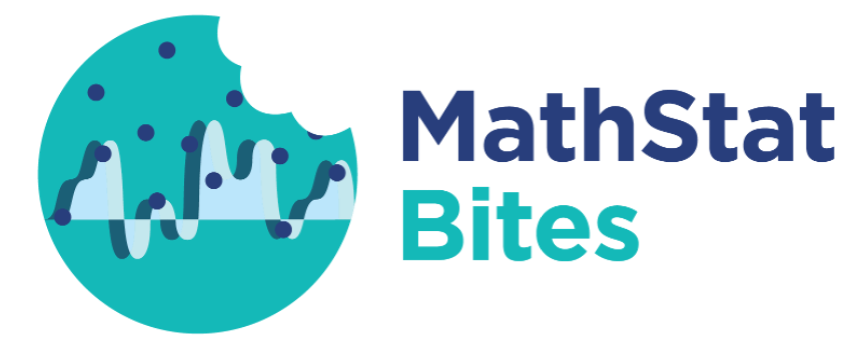Bridging the Gap: A Journey Through Generalizability and Transportability
In an increasingly data-driven world, the ability to draw accurate conclusions from research and apply them to a broader context is essential. Enter generalizability and transportability, two critical concepts researchers consider when assessing the applicability of their findings to different populations and settings. In their article “A Review of Generalizability and Transportability,” published in the Annual Review of Statistics and Its Application in 2023, Irina Degtiar and Sherri Rose delve into these critical concepts, providing valuable insights into their nuances and potential applications.
Choosing the Right Forecast
Nobel laureate Niels Bohr is famously quoted as saying, “Prediction is very difficult, especially if it’s about the future.” The science (or perhaps the art) of forecasting is no easy task and lends itself to a large amount of uncertainty. For this reason, practitioners interested in prediction have increasingly migrated to probabilistic forecasting, where an entire distribution is given as the forecast instead of a single number, thus fully quantifying the inherent uncertainty. In such a setting, traditional metrics of assessing and comparing predictive performance, such as mean squared error (MSE), are no longer appropriate. Instead, proper scoring rules are utilized to evaluate and rank forecast methods. A scoring rule is a function that takes a predictive distribution along with an observed value and outputs a real number called the score. Such a rule is said to be proper if the expected score is maximized when the predictive distribution is the same as the distribution from which the observation was drawn.
How hard is it to tell dynamical systems apart?
Equivalence relationships are everywhere, both in mathematics and in our day-to-day life: when we write “eggs” on our shopping list, we understand that it means any brand of eggs, in other words we will consider equivalent any two boxes of eggs, no matter their brand.
On swallowing shrewd marketing baits: A silent salute to demand evolution
To John, enticements never can exert a pull. Probably the product of a disciplined upbringing. When John wants to buy something, he knows exactly what he’s looking for. He gets in and he gets out. No dilly-dallying, no pointless scrolling. Few of us are like John; the rest secretly aspire to be. Go on. Admit it! The science of enticing customers is sustained by this weakness.
Playing Games Can Make You Smarter
Mathematics is a subject that many may be afraid of. Probability can be a challenging topic for many, even those with a strong background in mathematics.Even at the undergraduate level, many learners struggle with concepts like conditional probability.Conditional probability is a measure of the probability of an event occurring given that another event has already occurred. The authors have attempted to make the process of learning the concepts of conditional probability with the help of games, like the very famous Monty Hall problem.
An Introduction to Second-Generation p-Values
For centuries, the test of hypotheses has been one of the fundamental inferential concepts in statistics to guide the scientific community and to confirm one’s belief. The p-value has been a famous and universal metric to reject (or not to reject) a null hypothesis H0, which essentially denotes a common belief even without the experimental data.
Using Synthesized Medical Images to Bridge the Gap between Medical Imaging Machines
If you’re old enough to remember ‘flip phones,’ then you might remember the first time phones had cameras. Fast forward 10-20 or so odd years – now, phone cameras have front and back lenses with incredible resolution and the latest image processing technology. Now, imagine taking a picture of a dog with a flip phone from the early 2000s and with another phone released in 2023. The dog remains the same, but the image itself vastly differs. This is what is known as domain shift in medical imaging technology; the equipment and user used to capture the same object differs. Specifically in medicine, hospitals use different brands and specifications of equipment acquired from various vendors, which can depend on their resources and budget.
Causal Inference and Social Networks: How to Quantify the Effects of our Peers
“If all of your friends jumped off a cliff, would you jump too?” While this comeback may be just an annoying retort to many teenagers, it presents an interesting question – what is the effect of social influence? This is what Ogburn, Sofrygin, Diaz, and van der Laan explore in their paper, “Causal Inference for Social Network Data”. More specifically, they are interested in developing methods to estimate causal effects in social networks and applying this to data from the Framingham Heart Study.
Zeros of Random Polynomials and Their Higher Derivatives
Complex polynomials are one of the oldest and most fundamental objects of study in mathematics, and are ubiquitous in applications.
How Adopting Reproducible Practices Can Benefit Data Science Education
As the fields of statistics and data science have grown, the importance of reproducibility in research and easing the “replication crisis” has become increasingly apparent. The inability to reproduce scientific results when using the same data and code may lead to a lack of confidence in the validity of research and can make it difficult to build on and advance scientific knowledge.
